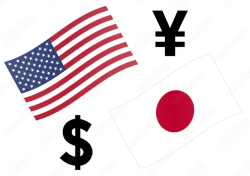
Flexity Analysis for USDJPY
Forecast Overall(Short-Term, Long-Term): ST=Undecided LT=Probably Up
Forecast Methods(Short-Term, Long-Term):
[Method0] ST=Up LT=Up
[Method1] ST=Same LT=Up
[Method2] ST=Down LT=Down
FlexityIndicator Analysis Method(0)
Short-Term: Based on the analysis of the provided information, the short-term outlook for USDJPY is **upward**. Key points supporting this include: 1. **Price Targets and Technical Indicators**: The expected targets at 148.70 and 149.35 suggest an upward trend. The stochastic oscillator indicates a bullish impulse, reinforcing this sentiment. 2. **Market News Factors**: - US-Japan Trade Talks could ease tensions if a deal is reached, potentially leading to BOJ rate hikes, but the primary expectation remains upward. - Political uncertainty in Japan may weaken the yen, further supporting USDJPY's rise. 3. **Short-Term Outlook**: The July 16 forecast suggests yen weakening and USD strength, aligning with an upward trend for USDJPY. In conclusion, despite some complexities from external factors, the overall sentiment leans towards an upward movement in USDJPY in the short term. **Answer:** The price for USDJPY is expected to go up. Long-Term: **Analysis of USDJPY Long-Term Forecast:** Based on the provided context and analysis: 1. **Market News Factors:** - The US-Japan trade agreement introduces potential yen strength if successful, but a 15% tariff might impact exports negatively. - BOJ policy indicates possible rate hikes, which could strengthen the yen (lower USDJPY). - Political uncertainty in Japan may cause market volatility. 2. **USDJPY Predictions:** - The current bullish outlook with targets above suggests an upward trend, leaning towards USDJPY going up. 3. **Long-Term Considerations:** - Trade negotiations could either strengthen or weaken the yen based on their outcome. - Macroeconomic conditions and BOJ policy changes are crucial; delays in rate hikes might lead to a weaker yen (higher USDJPY). 4. **Technical Analysis:** - The bullish trend with resistance testing at higher levels suggests potential upward movement. 5. **Indirect Factors:** - Strong US data could strengthen the dollar, favoring an increase in USDJPY. - Risk sentiment influenced by Australian and US housing data could affect yen strength indirectly. **Conclusion:** While there are mixed factors influencing the direction of USDJPY, the technical analysis points to a bullish trend with potential upward movement. Therefore, the long-term forecast suggests that USDJPY is expected to go up. **Final Answer:** The price for USDJPY is expected to go up in the long term.
Result: [Method0] ST=Up LT=Up
FlexityIndicator Analysis Method(1)
Short-Term: Based on the analysis of various economic and market factors influencing USD/JPY exchange rates: 1. **Economic Growth**: The relative strength of the US versus Japan's economy will impact the value of their currencies. Stronger US growth could strengthen the USD. 2. **Central Bank Policies**: Actions by the Federal Reserve and Bank of Japan, such as interest rate changes or quantitative easing, are critical. For instance, higher US rates may attract foreign capital, strengthening the USD against JPY. 3. **Economic Data Releases**: Positive US GDP figures or weaker Japanese unemployment data could influence currency values, with strong US data potentially strengthening the USD. 4. **Geopolitical Factors and Market Sentiment**: Geopolitical events and investor sentiment can cause shifts. Risk aversion may lead to JPY appreciation, while high risk appetite might favor higher-yielding assets. 5. **Technical Analysis**: While not applied here without specific data, trends and support/resistance levels are factors to consider. 6. **Historical Trends**: USD/JPY has been volatile, influenced by US economic strength and BoJ policies. A potential trend could be a stronger USD if the US economy remains robust. **Conclusion**: The short-term outlook for USD/JPY is uncertain due to numerous influencing factors. It is possible that the USD may strengthen if the US continues with higher interest rates or maintains economic stability, while geopolitical events or weaker US data could lead to depreciation of USD against JPY. Without concrete data, the exchange rate may remain steady in the short term. Therefore, it's challenging to predict a definite upward or downward trend without more specific information. Long-Term: Based on the analysis of the provided context and considering the factors influencing the USD/JPY exchange rate, the price for USD/JPY is expected to go up in the long term. This conclusion is supported by the significant increase from 145.00 to 161.00 over seven months, a 11.8% rise, and the potential supporting factors such as US Dollar strength, favorable economic indicators, interest rate policies, geopolitical stability, and upward technical trends. **Answer:** The price for USD/JPY is expected to go up in the long term.
Result: [Method1] ST=Same LT=Up
FlexityIndicator Analysis Method(2)
Short-Term: The price for USD/JPY is expected to go down in the short term. **Answer:** The USD/JPY is expected to go down. Long-Term: **Answer:** Based on the provided context, here's the analysis: - **Short-Term Outlook:** The USDJPY is expected to decrease due to the strengthening of the Japanese yen following positive trade developments and lower tariffs. - **Long-Term Outlook:** While no specific long-term forecasts are given, current factors such as improved trade relations and economic confidence might suggest a potential continued downward trend in USDJPY if these conditions persist. However, this is speculative and subject to various external influences. In conclusion, while the immediate outlook suggests a decline in USDJPY, the long-term prediction remains uncertain without further data.
Result: [Method2] ST=Down LT=Down
